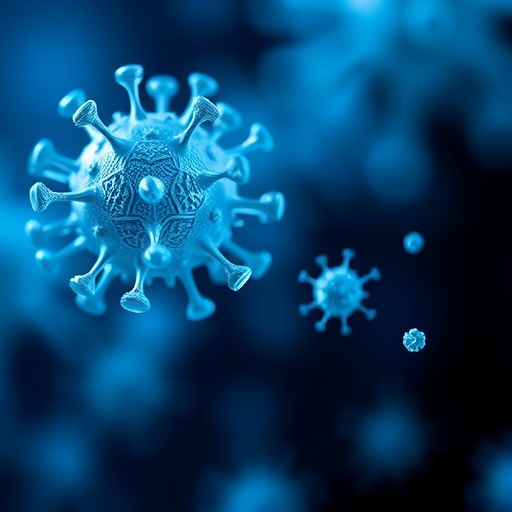In a groundbreaking leap for synthetic biology, researchers at the University of Warwick have engineered what might become the next generation of microbial cell factories. These living biofactories, typically bacteria augmented with synthetic genetic circuits, hold the promise of revolutionizing the production of chemicals essential for medicine, industry, and environmental sustainability. However, a longstanding barrier has been the evolutionary instability of these engineered cells, which under the metabolic strain of chemical production, tend to mutate or are outcompeted by non-producing mutants, leading to rapid loss of function and truncated factory lifespans.
At the heart of this innovation lies a sophisticated computational framework developed to simulate, with remarkable detail, bacterial growth, mutation, and competition dynamics in laboratory-like conditions. By harnessing this model, the team systematically screened dozens of genetic circuitry configurations intended to regulate synthetic DNA programs embedded in bacteria. Their goal was to identify control strategies that extend the productive lifespan of these cells while maximizing chemical output—a challenging balancing act given the competing cellular priorities of growth and production.
Dr. Alexander Darlington, who leads the study, emphasizes the delicate evolutionary battle within these cell populations. Engineered bacteria often suffer from the metabolic burden of producing target chemicals, slowing their growth rates. This slowdown inadvertently favors mutant cells that disable or lose the synthetic gene circuits, allowing them to divide more rapidly and eventually dominate. “Our computational modeling allowed us to pre-emptively evaluate different ‘genetic controller’ designs, identifying the most promising solutions before stepping into the lab,” Darlington stated.
Key to their success was the application of control engineering principles commonly used in electronic and mechanical systems. The researchers conceptualized a genetic “thermostat” — a self-regulating feedback loop capable of modulating gene expression in response to real-time cellular conditions. This dual-feedback control system observes both the rate of chemical production and the cell’s growth rate, dynamically adjusting gene circuit activity to maintain an optimal equilibrium.
The brilliance of this approach is in its counterbalancing act: by reducing gene expression when production stress threatens cell viability, and ramping it back up when conditions permit, these circuits prevent the rise and domination of non-producing mutants. Computational results predict that this approach triples the longevity and sustained function of engineered cells. While the instantaneous chemical output per cell sees a slight dip, the cumulative production over extended generations markedly improves, representing a major stride toward sustainable and efficient biomanufacturing.
Darlington elaborated on the underlying evolutionary challenge contrasting growth and function. “The metabolic cost of maintaining high-level production slows down cells, inadvertently giving a reproductive advantage to mutants that shut down the engineered circuits,” he explained. “Our mathematical models meticulously capture this balance among growth, mutant emergence, and protein production, enabling us to optimize multiple genetic control designs.”
Beyond efficacy, these engineered feedback systems offer considerable practical benefits. Traditional efforts to prolong engineered cell function commonly rely on antibiotics to suppress mutants or involve intricate multi-step genetic engineering. Both approaches increase complexity, cost, and raise concerns such as antibiotic resistance. In contrast, the Warwick team’s method circumvents these issues altogether, promising a simpler, cleaner, and more scalable pathway to durable synthetic biology applications.
Another compelling advantage is the versatility of the system. These genetic controllers can be integrated into diverse bacterial hosts and production pathways with minimal redesign, making them broadly applicable across multiple industries from pharmaceuticals to biofuels. Moreover, the approach is fully compatible with existing synthetic biology toolkits, potentially merging synergistically with complementary strategies to further enhance cell factory robustness.
The implications of these findings stretch far beyond incremental progress. Long-lasting cell factories that reliably produce high-value chemicals have the potential to transform how we manufacture medicines, produce environmentally friendly materials, and even remove pollutants from ecosystems. This study signifies a foundational step toward harnessing living organisms as sustainable, programmable manufacturing platforms that can function efficiently over realistic industrial timescales.
While the current findings stem from computational simulations, the Warwick team is poised to move into experimental phases. These upcoming laboratory tests will validate the theoretical predictions and refine the genetic controllers in living cells, a critical step on the path from model to real-world application. If successful, this could unlock a new era in synthetic biology, where engineered microbes reliably deliver on their promise as resilient biofactories.
In the context of broader synthetic biology challenges, this research showcases the power of interdisciplinary approaches that merge biology with engineering and computational science. By treating cells as dynamic systems subject to feedback control, it is possible to design smarter genetic circuits that evolve harmony between function and fitness — a principle likely to influence the design of future therapeutics, diagnostics, and industrial microbe platforms.
The team’s research, published in the prestigious journal Nature Communications, delineates a novel avenue to enhance the evolutionary longevity of synthetic gene circuits in bacteria. Their computational study, funded by prominent institutions including the Royal Academy of Engineering, EPSRC, and BBSRC, demonstrates how optimal feedback control designs can offset the intrinsic evolutionary pressures that have long hindered synthetic biology progress.
In summary, the University of Warwick’s pioneering work introduces a compelling genetic feedback system that stabilizes synthetic biofactories, ensuring heightened and prolonged chemical production. This breakthrough signals promising advances toward sustainable, mutation-resilient bacterial factories that could dramatically shorten product development cycles while reducing reliance on antibiotics and complex engineering measures. The future of synthetic biology, once limited by the fragile nature of engineered microbes, may now be on the cusp of a robust renaissance powered by these self-regulating genetic thermostats.
Article Title: Genetic controllers for enhancing the evolutionary longevity of synthetic gene circuits in bacteria
News Publication Date: 29-Sep-2025
Web References:
https://doi.org/10.1038/s41467-025-63627-4
Keywords: Synthetic biology, Control theory, Optimal control, Dynamical systems, Modeling




